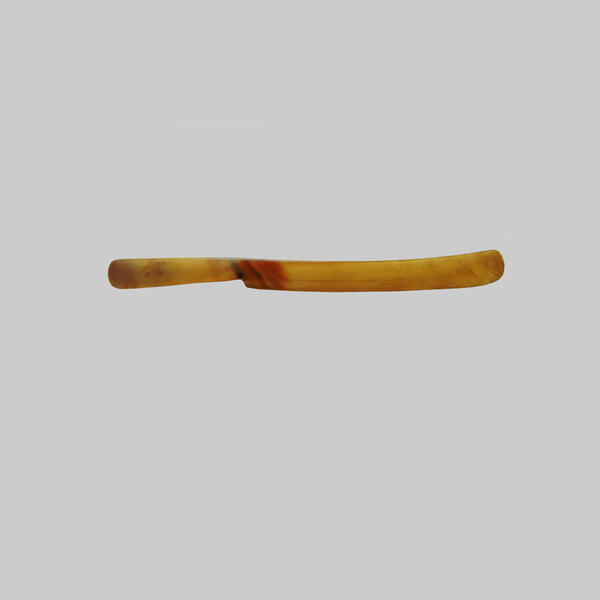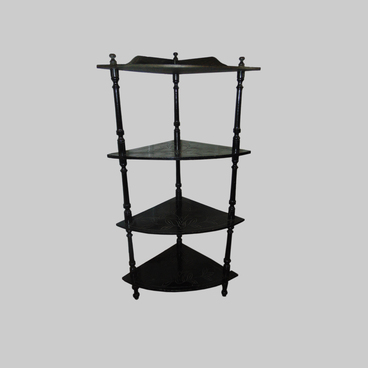On the desk in the ‘Large sitting room’ there is a light-brown bone knife made in the 19th century. This knife was used in the house of Aksakovs to open letters, as well as to separate pages in books and newspapers. It is made of ivory, a precious material derived most commonly from elephant tusks. Ivory is a very practical material for blades, as it can easily be sharpened and polished.
A knife in and of itself is an ancient tool, but office cutters have only appeared relatively recently. Originally, the most ordinary household or military blades and daggers were often used to open letters and envelopes. At the turn of the 18th-19th centuries, specialized knives for cutting paper became increasingly more widespread. The need for this distinctive variety appeared as a result of the widely spreading paper products.
In the 19th century, the approach to selling paper products was quite different. At that time, a book just bought in a store could not be opened without a paper cutter, as back then, the hydraulic press, which could cut apart the book pages, simply did not exist. Therefore, a large sheet folded several times, containing up to 20 pages of a future book, was simply stitched, joined to others, this was how a book was compiled, which immediately, without trimming, was bound. The pages of such a book could not be turned over without cutting them first. For this, there was bone, wood and metal knives for paper of various types, and thicknesses. Besides, paper cutters were also used to open up letters, which at that time were the only way to communicate at great distances.
Many of the paper cutters that have been preserved to this day, like those presented in the ‘Large sitting room’ collection, are often recognized as outstanding works of decorative and applied art. They could be made of precious metals, ivory, precious stone, etc. Such knives were more of a luxury item or a memorable souvenir rather than a tool with a practical purpose. Modern paper cutters may also be works of art, though, most often, they are purely practical. Moreover, because of the declining use of paper, such cutters are gradually disappearing from everyday use.
A knife in and of itself is an ancient tool, but office cutters have only appeared relatively recently. Originally, the most ordinary household or military blades and daggers were often used to open letters and envelopes. At the turn of the 18th-19th centuries, specialized knives for cutting paper became increasingly more widespread. The need for this distinctive variety appeared as a result of the widely spreading paper products.
In the 19th century, the approach to selling paper products was quite different. At that time, a book just bought in a store could not be opened without a paper cutter, as back then, the hydraulic press, which could cut apart the book pages, simply did not exist. Therefore, a large sheet folded several times, containing up to 20 pages of a future book, was simply stitched, joined to others, this was how a book was compiled, which immediately, without trimming, was bound. The pages of such a book could not be turned over without cutting them first. For this, there was bone, wood and metal knives for paper of various types, and thicknesses. Besides, paper cutters were also used to open up letters, which at that time were the only way to communicate at great distances.
Many of the paper cutters that have been preserved to this day, like those presented in the ‘Large sitting room’ collection, are often recognized as outstanding works of decorative and applied art. They could be made of precious metals, ivory, precious stone, etc. Such knives were more of a luxury item or a memorable souvenir rather than a tool with a practical purpose. Modern paper cutters may also be works of art, though, most often, they are purely practical. Moreover, because of the declining use of paper, such cutters are gradually disappearing from everyday use.



